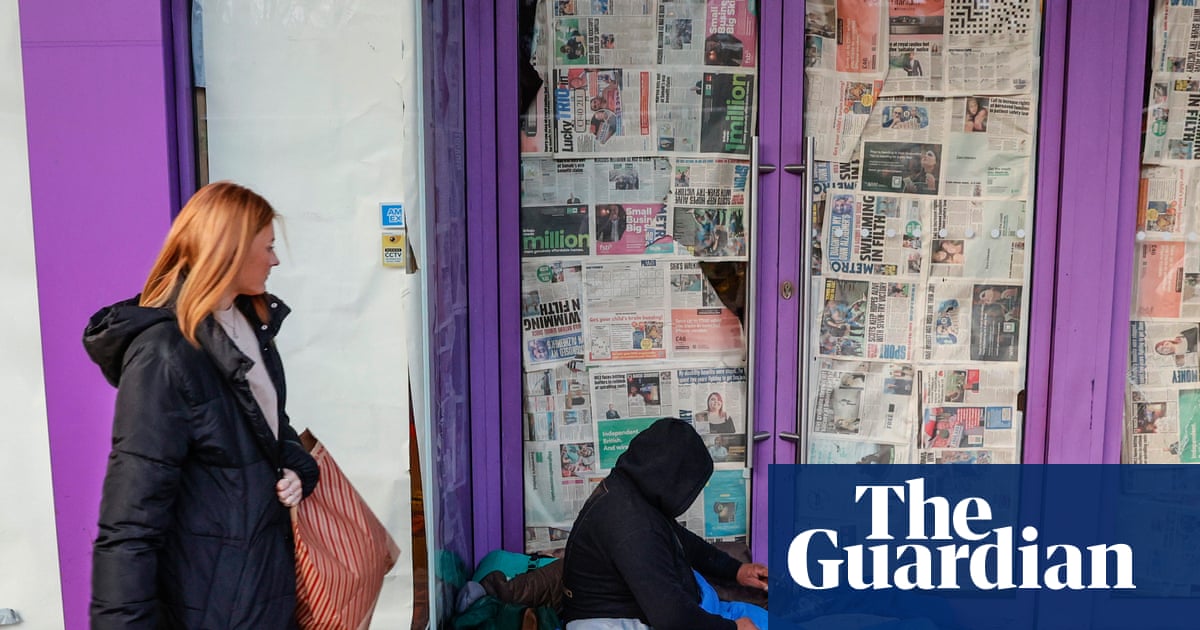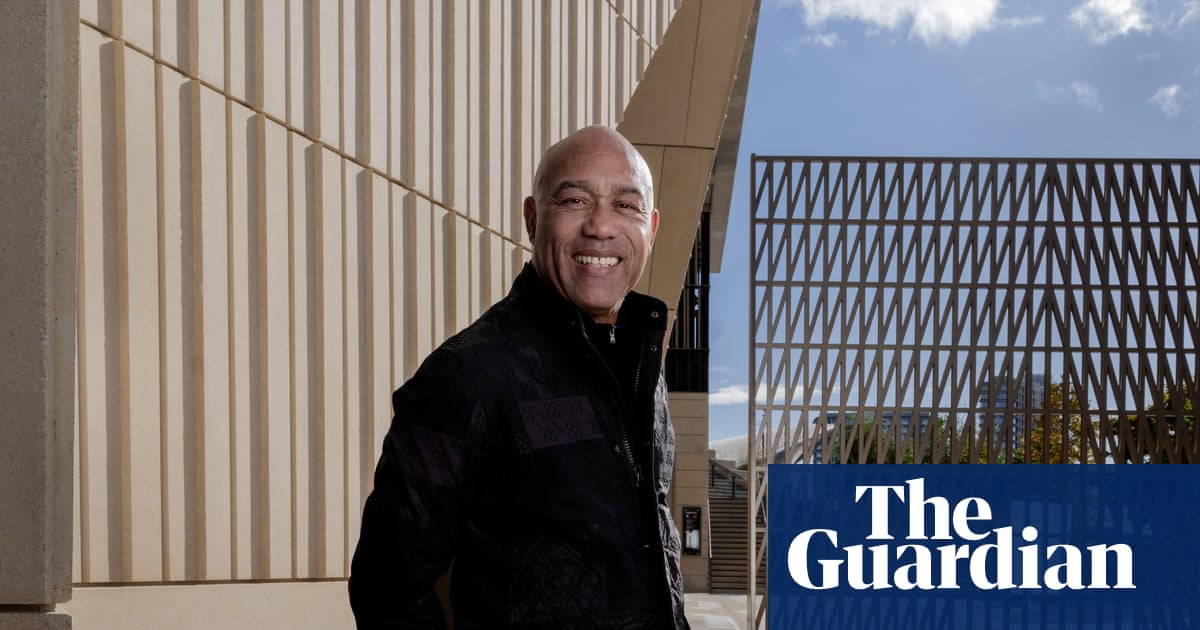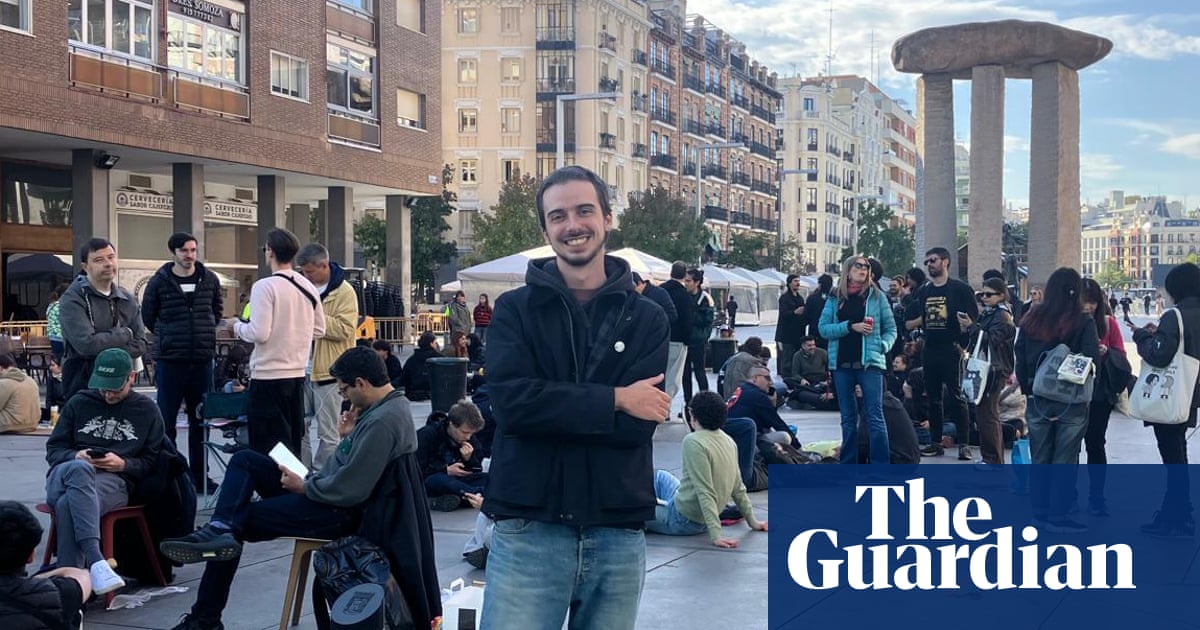44,000 immigrants, 1,700 flights, 100 days: a Guardian investigation of leaked flight data and government detention data reveals the inhumane journey of immigrants shuttled around and outside the US
The Trump administration is shuttling immigrants around the US in irregular and unprecedented ways, according to the findings of a Guardian investigation, effectively vanishing people into a “purgatory” that denies them constitutionally-protected rights.
A review of leaked flight records and passenger manifests from Global Crossing Airlines (GlobalX), the charter company that operates the majority of deportation flights for US Immigration and Customs Enforcement (Ice), has provided a rare look at the winding journeys of more than 44,000 immigrants detained or deported by the Trump administration.
The leaked data was provided to the Guardian, which has verified its authenticity. It encompasses about 100 days from late January to early May.
Note: About 370 flight routes from 19 January 2025 to 2 May 2025.
The Guardian reviewed GlobalX deportation flights as well as government detention data and interviewed attorneys, advocates, former officials and immigrants who have been through the system. The analysis has revealed that:
-
GlobalX carried out more than 1,700 flights for Ice, the vast majority of them between domestic US airports. The airline transported nearly 1,000 children, including nearly 500 children under the age of 10, and 22 infants.
-
For many immigrants, the flight paths were long, with multiple legs and layovers. Nearly 3,600 people were moved around repeatedly, forced to board five or more GlobalX flights.
-
Immigrants were also moved between detention facilities more than before. The average number of transfers per person has markedly increased in the past six months, and some detained immigrants have been moved as many as 10 or 20 times.
-
Detainees were moved around the US without notice, to locations far from their families, communities and legal counsel – leading to apparent violations of constitutional due process rights.
-
Along their journeys, immigrants say they were repeatedly kept in the dark about where they were going. Some say they were threatened by immigration agents with long-distance transfers and separation from their families if they did not accept voluntary deportation.
“It just seems so fundamentally inhumane,” said Sirine Shebaya, executive director of the National Immigration Project, a non-profit legal advocacy group. “The administration is using the system to make it as prohibitively cruel as it possibly can for the people going through.”
Immigrants are being moved around via chartered flights operated by various private contractors, as well as by commercial airlines, buses and cars.
But perhaps more so than any other transportation company, GlobalX, a Miami-based charter airline, has become a crucial tool of the US deportation machine – operating more than half of Ice deportation flights in 2024 and 2025. The company, which had initially marketed itself to sports teams and rock bands seeking to travel in luxury, now earns most of its revenue from its Ice contract.
It was the airline the Trump administration tapped to move hundreds of Venezuelan men to El Salvador, despite a judicial order blocking the flight. It was also the operator of a now infamous deportation flight to Brazil during which multiple passengers fainted from heat exhaustion.
GlobalX did not respond to a request for comment.
The leaked GlobalX flight manifests provide one of the most detailed views available of the scale and scope of Trump’s mass deportation scheme.
How the Guardian reported on leaked GlobalX flight data
ShowInfants sent overseas. People shuttled to different detention centers across the country five, 10, 15 times over a period of a few weeks. Lawyers desperate to find their clients. Detention centers exceed capacity as people wait for their deportation flights. A Guardian US investigation has revealed new details about the US government’s chaotic mass deportation effort, including exclusive analysis of deportation flights during the first months of the Trump administration.
Our reporting relied in part on details of over 1,700 flights and passenger lists encompassing more than 44,000 people that were anonymously leaked to the Guardian in May 2025, following a hack of Global Crossing, the charter airline that provides deportation flights across and outside the US. The hacking group Anonymous claimed to be responsible for the breach.
The leaked information included passenger names, personally identifying information for those passengers, flight numbers, flight details, and other data for deportation flights that occurred in the first 100 days of Donald Trump’s presidency, between January and May. The data was leaked to a number of media outlets, including the Guardian, unprompted.
On 5 May, GlobalX confirmed in a letter to the SEC that it had learned of recent “unauthorized activity within its computer networks and systems supporting portions of its business applications”, which it determined was the result of a “cybersecurity incident”.
Reporters verified the authenticity of the data in a few different ways, using public and previously unreported deportations, as well as public flight info and file metadata.
We verified the deportation journeys of every person interviewed for the series, like Andry José Hernández Romero, and checked to make sure that their journeys matched the data in the leaked manifests. Each person’s recollection of their deportations match the origins, destinations and times listed in the leaked data.
Reporters also located individuals whose names and stories were not public, and confirmed that the flight patterns described in the data were accurate. In one case, the details of which have never been made public, reporters looked up the flights of a person deported to Colombia after being apprehended at the northern border and matched the person by name and birthday within the GlobalX data. Reporters then verified each step of the individual’s deportation journey in the leaked data.
The Guardian also found other details that supported the authenticity of the data. An analysis of file metadata found that the files were created at various points in time between 3 May and 4 May, matching the approximate time frame GlobalX said its records were breached. We also verified that flights labeled with “CANCEL” or “CANCELED” in the messages field were canceled by comparing the tail numbers of flights in FlightAware with flights in our data. Flight details in our data match publicly available flight data.
In addition to the manifests and flight logs from GlobalX, the Guardian’s reporting relied on additional data from the Deportation Data Project, a group of academics and lawyers using records requests to obtain and release anonymized immigration enforcement data to support our findings. The data was used to calculate daily populations at different detention facilities and to analyze the frequency of transfers between detention centers, which helped support other findings of the Guardian’s investigation.
GlobalX did not respond to a request for comment.
The US has always moved immigrants around – most commonly, when a detention center reaches capacity, officials transfer detainees to facilities with more available beds. But the Trump administration is now shuffling immigrants around more frequently than before.
In some cases, lawyers believe that the government is deliberately moving their clients to jurisdictions where immigration judges are less likely to grant asylum, or where legal injunctions blocking Trump immigration policies do not apply.
DHS said that immigrants in custody are informed about their transfers and allowed to contact their families throughout. “Claims that transfers of detainees are being ‘weaponized’ or ‘hidden’ are also categorically false,” said Tricia McLaughlin, the DHS assistant secretary for public affairs.
“Despite a historic number of injunctions, DHS is working rapidly and overtime to remove these aliens from detention centers to their final destination – home,” McLaughlin said. “All transfers are made in accordance with strict guidelines.”
According to protocols established in 2012, Ice is supposed to minimize long-distance transfers, and generally avoid moving detainees away from their immediate family and attorneys. The American Immigration Council and Rocky Mountain Immigrant Advocacy Network (RMIAN) have filed a lawsuit to determine whether Ice is adhering to those policies, or whether transfer rules have been changed.
For immigrants in the system, these chaotic transfers can feel like a punishment, designed to wear people down, said Faisal Al-Juburi, head of external affairs at the legal aid group Raíces.
“You end up in a continuous state of unknown for an indefinite period of time,” he said. “Families are being put into a purgatorial state.”
The plane made a stop, but he never knew where
Andry José Hernández Romero, one of 252 Venezuelan men that the US expelled to El Salvador’s most notorious megaprison, is still trying to make sense of why and how he ended up where he did.
He had come to the US southern border in August 2024, arriving just after his 31st birthday. After an initial screening, US officials determined that Hernández Romero, a queer makeup artist who had faced discrimination in his home country, could have a valid claim to asylum. They placed him at a detention center near San Diego, California, while he awaited a hearing to decide his case.
About a month into the second Trump administration, everything started to go topsy turvy. At the crack of dawn on 8 March, an official told him to get ready – he was being moved. When he asked where he was going, an official responded: “To a much better place.”
He was given no specifics.
He was first moved to Phoenix, and then loaded onto a GlobalX plane. Leaked records show that flight stopped – unbeknownst to his lawyers – in Phoenix, then Las Vegas, then Seattle and finally Harlingen, Texas.
None of this made sense. Hernández Romero was due to appear in immigration court, in California, the following week.
Lindsay Toczylowski, the co-founder of Immigrant Defenders Law Center (ImmDef) and Hernández Romero’s lawyer, thought it was strange. She figured the government would fly him back to San Diego for his court appointment. But the appointment came, and Hernández Romero wasn’t there. “This is highly unusual, but again, at the time, Ice didn’t seem to have any information,” she said.
She believed it was a bureaucratic mix-up. It was a Friday, and she assumed the government would reschedule his hearing for the upcoming Monday.
And yet, something seemed off.
That weekend, lawyers from ImmDef called the detention center to which Hernández Romero had been transferred, and they were told he was no longer there. “They actually said to us it might be that he has just left for a little while and is coming back,” said Toczylowski. “We had no idea what to make of it.”
Hernández Romero, meanwhile, came to suspect that the officials around him were lying. Many of his compatriots – others who had been shuttled to the same Texas detention center – were starting to get suspicious as well.
José Manuel Ramos Bastidas was worried he would be sent to the US naval base in Guantánamo Bay, Cuba – where the US government had already sent a group of Venezuelan men accused of criminal violations and gang membership.
In February – after months of being detained at the Stewart Detention Center in Lumpkin, Georgia – Bastidas was transferred to an Ice facility in El Paso, Texas. From there, he called his wife, and told her to record his message, to share with the public should anything happen to him. “They detained me simply because of my tattoos. I am not a criminal. I have been here for 10 months,” he said. “This is simply in case something happens to me … if they keep transferring me to another detention center.”
A few weeks later, he was moved to a facility in Raymondville, Texas. Officials initially told him he would be going to Mexico. “At the end they said we were going to make a stop in Honduras and then go on to Venezuela,” he said.
He felt a moment of hope then – maybe, finally, he would see his two-year-old son, his wife, his mother.
On board the plane – an Airbus A320 with 179 seats – staff told the shackled detainees not to open any of the shades. “But we thought, it’s fine, we’re going to Venezuela – that was the goal,” he said. At least, that’s what he and the others kept saying to each other, almost, in a way, to reassure one another.
The plane made a stop, but he never knew where.
It refueled, took off again, and finally landed. “We opened the window [shades], and there we saw blue letters that said El Salvador. And we saw many, many police and soldiers, and tanks, helicopters, drones. That’s when the terror began.”
For the next four months, Hernández Ramos, Ramos Bastidas and 250 other Venezuelan men were cut off from the outside world. The US government never released a full list of all the men it had condemned to Cecot – leaving dozens of families to guess at whether their loved ones had been sent there.
“The government has never done something like this before, taking an asylum seeker and disappearing them – putting them on a plane to a third country,” said Toczylowski. “I had never seen that happen. So it wasn’t something we were anticipating.”
Human rights and legal aid groups, in the meantime, were noticing it was becoming increasingly difficult to keep track of many of their other clients. “It really is very strange, you get someone who’s picked up, they go to a hold cell, they stay there for seven days – which is completely outrageous. They then get moved to Florida. From there, they get taken to Arizona, then they end up in Texas,” said Shebaya of the National Immigration Project. “It’s like this wild goose chase, trying to follow where the person is and what the reasons are even for moving them.”
For lawyers, hours spent searching for clients
People in Ice detention have always been transferred between facilities, but transfers increased in frequency after Trump took office. A Guardian analysis of anonymized detention data from the Deportation Data Project, a group of academics and lawyers focused on immigration enforcement data, has found that the people who entered Ice detention between September 2023 and January 2025 – during the Biden administration – were transferred twice, on average. Immigrants that were booked into Ice detention since the start of the second Trump administration have been transferred more frequently, an average of three times per person.
It has become routine for immigration attorneys to spend hours each day trying to find their clients. Increasingly, they said, searches in Ice’s online detainee locator system – which is meant to provide real-time updates on where migrants are being held – were proving futile.
Often, the system was wrong, or out of date.
At one point, it logged that a number of people were being held in Washington DC – which does not have any Ice detention centers. “At some point we realized that some of them had been sent to Guantanamo Bay,” Shebaya said.
During the militarized immigration raids in Los Angelesin June, lawyers from ImmDef and other groups compiled a list of about 1,200 people arrested. They have been unable to find about 400 of them, said Toczylowski.
“We have an entire team that is just looking every single day to try to locate people, so then we can communicate with them, offer them representation, and try and get them help,” she said.
At times, attorneys said, the government has moved clients to states and locations where immigration judges tend to grant asylum at lower rates, or where petitions for a writ of habeas corpus challenging detentions are harder to obtain.
In some cases, when the administration has tried to use unconventional or obscure procedures to expel immigrants, attorneys have filed legal complaints accusing DHS of moving people to judicial districts that were more likely to side with the Trump administration. In March, administration used a cold war-era provision to arrest pro-Palestine student activists – and swiftly shuttled them to detention centers in Louisiana and Texas, triggering a series of legal battles about which judges should oversee the students’ cases.
In April, a federal judge in the southern district of Texas banned the government from using the Alien Enemies Act, an 18th century wartime law, to deport Venezuelans accused of gang membership. Ice soon moved two Venezuelan men from a south Texas detention center to a different one in northern Texas, where the ban didn’t apply. Attorneys for the American Civil Liberties Union accused the DHS of “shipping” the men to a friendlier jurisdiction.
Previously, it was not uncommon for immigrants who arrived at the southern border to be moved to detention centers all over the US. But in June and July, the number of Ice chartered flights between US cities increased two-fold compared with prior months, according to flight data compiled by Tom Cartwright, an immigration advocate who has been tracking Ice flights for nearly six years.
“There is a lot of movement, and it really has accelerated significantly,” Cartwright said.
The DHS has moved to arrest record numbers of immigrants and keep them detained rather than releasing people on bond. In the aftermath of ramped up raids in cities across the US, immigration officials are scrambling to find space in the detention system to hold arrestees.
“It’s hard to say how much of that is due to capacity issues at detention centers, and how much of that is for other reasons. But I don’t think the numbers lie at all,” Cartwright said.
A ‘particularly cruel’ fate
For immigrants inside the system – the chaos is punishing.
When LW, a 37-year-old mother who came to the US with her 10-year-old son in April seeking asylum, immigration agents told her she must either return to China with her kid – or the government would separate them.
She tried to explain to border patrol agents in San Diego that she had faced political persecution back home, that both she and her son could be killed if they ever went back. It was to no avail.
She and her son spent about a week at a Customs and Border Patrol (CBP) facility, sleeping on a thin mattress on the floor. They weren’t able to make any calls. “No contact with the outside world. I was still not able to let my boyfriend know that we were alive,” she said in a sworn declaration in her immigration case, shared with her permission by her lawyers at Raíces.
Eventually, they presented her with deportation documents. She refused to sign.
Two days later, at about 4am, LW said, agents forced her and her son into an unmarked blue car. They were driven to the airport.
“According to them, if I did not get on this plane, I would have to be taken on a military aircraft back to China,” she said. “My heart dropped.”
She was frantic – using all the English she could muster to plead her case. She said they grabbed both of her arms and began pulling her toward the terminal. . “Desperate and terrified of what might happen, I dropped to the ground ,” she said.
Eventually, she said, after conferring among themselves, the agents loaded LW and her son back into the blue car. By then, she said, both were crying – and the agents told them to shut up.
Two days later, LW and her son were moved to a family detention center in Dilley, Texas – where they were able to connect with lawyers at Raíces.
Two weeks after that, LW disappeared from Ice’s online detainee locator system.
Her lawyers scrambled to piece together what had happened. LW had been moved to an Ice detention facility in Newark, New Jersey, while her son was sent to a shelter for unaccompanied minors, managed by the Office of Refugee Resettlement.
The agents told her the only way she could see her son again was if she returned to China. “We cannot return to China. My life and my son’s life will be at risk,” LW said. “It took great sacrifices and risk to even be able to escape and get here.”
Before her lawyers were able to meet with her in New Jersey, LW was moved again – to El Paso, Texas. And then again, to Chaparral, New Mexico. It took LW’s legal team at Raíces 11 weeks to make contact with her. She and her son have now been separated for 16 weeks.
“Based upon everything that we can see, this is punishment… a punishment for not acquiescing,” said Al-Juburi of Raices. “The system is designed to make you, as an immigrant, give up, to make you more likely to self deport.”
DHS defended current practices.
“Parents, who are in the US illegally, can take control of their departure. Through the [Customs and Border Control] Home App, the Trump administration is giving parents illegally in the country a chance to take full control of their departure and self-deport, with the potential ability to return the legal, right way and come back to live the American dream,” said McLaughlin, the DHS assistant secretary of public affairs.
She added: “Rather than separate families, Ice asks parents if they want to be removed with their children or if the child should be placed with someone safe the parent designates.”
Immigration attorneys across the US have reported that clients are given ultimatums, rather than a real choice. During the LA raids, at least four pregnant women were picked up and transferred to detention centers in Florida, said Toczylowski of ImmDef.
Another of her clients was arrested in LA, in front of his eight-year-old son and flown, almost immediately afterwards, to Tacoma, Washington. “I saw his son crying and devastated,” she said. The family has remained separated since then.
“It seems the goal is to make people desperate enough so they decide not to fight their case, so they decide that the quickest way to see their other children or make sure they don’t have to deliver their babies in shackles is to accept a voluntary deportation,” said Tocylowski. “It is particularly cruel.”
Additional reporting by Raima Amjad
Contributors
Graphics: Andrew Witherspoon
Illustrations: Angelica Alzona
Visuals editing: Marcus Peabody
Copy editor: Rusha Haljuci
Contact us about this story
Show
The best public interest journalism relies on first-hand accounts from people in the know.
If you have something to share on this subject you can contact us confidentially using the following methods.
Secure Messaging in the Guardian app
The Guardian app has a tool to send tips about stories. Messages are end to end encrypted and concealed within the routine activity that every Guardian mobile app performs. This prevents an observer from knowing that you are communicating with us at all, let alone what is being said.
If you don't already have the Guardian app, download it (iOS/Android) and go to the menu. Select ‘Secure Messaging’.
SecureDrop, instant messengers, email, telephone and post
If you can safely use the tor network without being observed or monitored you can send messages and documents to the Guardian via our SecureDrop platform.
Finally, our guide at theguardian.com/tips lists several ways to contact us securely, and discusses the pros and cons of each.
Illustration: Guardian Design / Rich Cousins

 1 month ago
67
1 month ago
67

















































